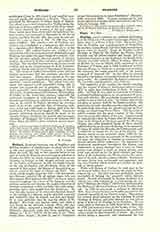

Nithard, Frankish historian, son of Angilbert and Bertha, daughter of Charlemagne; d. about 843 or 844 in the wars against the Normans. Little is known about his early life, but in the quarrels between the sons of Louis the Pious he proved a zealous adherent of Charles the Bald, by whose command he went as ambassador to Lothair in 840, though without success. At the battle of Fontenoy, in 841, he fought bravely at the side of Charles, and afterwards wrote, at the request of that prince, the history of the period in order to establish the right of Charles the Bald. This work, which usually bears the title: “De dissensionibus filiorum Ludovici Pii ad annum usque 843, seu Historiarum libri quattuor 841-843”, recites in rather uncouth language the causes of the quarrels and describes, minutely and clearly, the unjust behavior of Lothair, sometimes a little partially, but with understanding and a clear insight into the conditions. He was the only layman of his time who devoted himself to the writing of a history, and he reported earnestly and truthfully what he himself had seen and heard. It is very probable that he was lay abbot of St. Riquier. His body was buried there, and when it was found, in the eleventh century, Mico, the poet of the abbey, composed a lengthy rhymed epitaph. Nithard’s historical work has been published by Migne, in “P.L.”, CXVI, 45-76; also in the “Mon. Germ. Hist.: Script.”, II, 649-72, and in “Scriptores rerum Germanicarum in usum Scholarum” (Hanover, 1830, reprinted 1907). German translations by Jasmund appeared at Berlin, 1859; third edition, by Wattenbach, Leipzig, 1889.
PATRICIUS SCHLAGER

